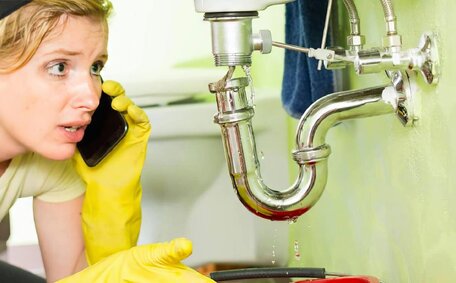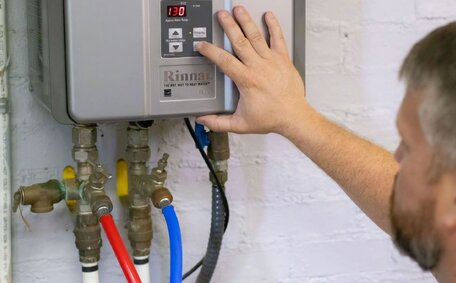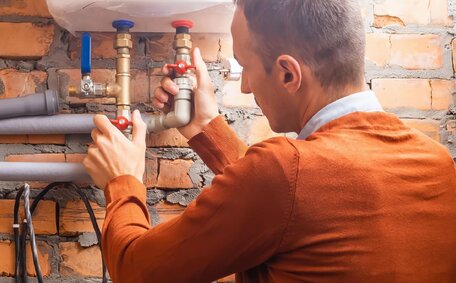What is a Tankless Hot Water System?
A tankless hot water heater, known as an on-demand or instant hot water system, provides hot water instantly without a storage tank, offering superior efficiency over traditional systems. Unlike storage tank water heaters with sizeable reservoirs, instant hot water systems directly heat water as it flows through the unit, eliminating standby energy losses.
Like heat pumps, gas hot water systems supply water on demand, ensuring continuous hot water availability.
Whether gas or electric, tankless water heaters operate with efficiency, a subject we will delve into with greater detail shortly.
Electric tankless heaters employ heating elements to elevate water temperature, whereas gas models use a burner and heat exchanger to heat the flowing water.
The primary advantage of tankless systems is their superior energy efficiency. They heat water on demand, avoiding the energy waste of storage tanks. Tankless heaters are also compact, saving valuable space in the home.
However, models vary in flow rate capabilities, making it crucial to size your tankless water heater to meet your home’s peak demand.
The Mechanics Behind Tankless Water Heaters
Tankless water heaters use either gas burners or electrical resistance heating coils to instantly heat water on demand as it flows through the unit. The Key components include how the heater works:
- Water inlet - Brings in the cold your water supply when demand hot water arises
- Flow sensor - Detects when hot water tap turned on and signals the heating mechanism to activate
- Heat exchanger - Transfers heat from the gas burner or heating elements to the water
- Gas burner or heating coils - Heats the supply water up to the set water temperature
- Water outlet - Supplies hot water to supply hot water to taps and appliances
When the flow sensor detects water movement, the heating mechanism is activated to promptly heat the water on its single journey through the heat exchanger. Upon the hot water tap being turned off, the system deactivates, preventing heat loss and providing an uninterrupted hot water supply.
The flow rate, indicative of the amount of hot water that the unit can deliver, is typically around 6 litres per minute for residential units, influencing hot water availability. Flow rates between 16 to 20 litres per minute are common for commercial tankless systems to meet higher demand.
Gas water heater tankless models, often referred to as instant gas heaters, tend to have higher flow capacities due to their burner’s rapid water heating, while electric models may require multiple heating coils for adequate flow rates.
How Tankless Systems Heat Water Instantly
Tankless water heaters provide instant hot water by rapidly heating the water flow as it passes through the unit. Here’s what occurs with continuous flow hot water when you turn hot water tap:
- The flow sensor detects the water flow and signals the gas burner or electric heating coils to activate.
- The cold incoming water supply enters and flows into the heat exchanger.
- Inside the heat exchanger, the gas flame or electric coils rapidly heat the water up to the desired temperature as it flows through.
- The heated water supply hot continuously flows out of the unit and through to the hot water tap, providing an endless supply on demand.
- When the tap is turned off, the gas burner or heating coils deactivate again since there’s no longer any water flow.
This on-demand operation provides an uninterrupted flow from the heater to your taps and appliances the moment the tap is turned on, eliminating waiting times and the risk of running out of hot water present with conventional tank heaters.
Tankless water heaters manage energy consumption by operating only when needed, shutting off immediately when the flow ceases, thereby maximising efficiency.
Key Components and Parts of a Tankless System
The main components of a tankless water heating system exclude traditional tank storage and include:
- Water inlet - Brings cold water into the unit from the main water supply
- Flow sensor - Detects when a hot water tap is opened and signals the heating system to turn on
- Heat exchanger - Transfers heat from a gas burner or electric heating elements to the incoming water flow
- Heating mechanism - Either gas burners or electric resistance coils that heat the water
- Electronic control board - Manages the temperature settings and heating activation
- Water outlet - Delivers the heated water to taps and appliances
These integrated components all work together as the system heats water instantly and endlessly when there’s a need for hot water being used by a tap or appliance. The flow sensor tells the heating mechanism when to turn on and off based on water flowing through the unit, maximising energy efficiency.
The capacity of the heat exchanger and heating elements/burners also determine the maximum possible flow rate. More powerful heating coupled with an efficient heat exchanger provides greater instantaneous flows for high demand situations.
Gas vs Electric Tankless Water Heaters
Understanding the operation of tankless water heaters highlights differences in power source, efficiency, costs, and hot water delivery between gas and electric models.
Gas tankless heaters use natural gas or propane to power a burner that heats water as it flows through a heat exchanger. Tankless water heaters have impressive energy efficiency, often exceeding 95%, owing to the rapid heating capability of the gas flame.
Electric tankless heaters heat the water using coils through which electrical current runs. They can achieve over 99% efficiency but generally have a lower heating capacity than gas heaters, especially for high flow rate needs. Upgrading your electrical panel may be necessary to accommodate an electric tankless unit’s power requirements.
Regarding costs, gas tankless heaters typically have a higher initial price, but could be more economical over time in regions with lower gas prices. Conversely, electric models are less costly upfront but may incur higher energy bills where electricity prices are high.
Households with high hot water demand are better suited to gas systems, while those with lower demand might find electric options more appropriate. Consulting a professional to assess your situation is essential in choosing the right gas or electric water heater for your home.
Benefits of Tankless Water Heating
Tankless water heaters offer several key benefits over traditional water heaters, which include:
- Greater energy efficiency - Tankless heaters only heat water when on demand, avoiding standby heat losses from stored hot water
- Space savings - Their compact size frees up considerable room space
- Potentially longer lifespan as heaters last with fewer components and no tank corrosion, which can add years to their usable life
- Endless hot water - Continuous flow ensures hot water is always available without depletion
- Lower operational costs - No energy wasted maintaining stored water at temperature
Tankless systems can yield significant energy bill savings by heating water only when needed, alongside a long lifespan and reliable delivery of water, ensuring outstanding long-term value.
Potential Drawbacks to Consider
While tankless water heaters offer exceptional efficiency and performance, there are some storage water drawbacks to weigh up:
- More expensive upfront costs – Purchasing a tankless system costs more initially than a conventional storage unit
- Complex installation – Retrofitting a tankless unit often requires new gas lines, exhaust vents, or electrical upgrades
- Flow limitations – Simultaneous uses can exceed tankless heaters’ flow capacity, resulting in low water pressure
- Hard water effects – Mineral buildup from hard water can degrade heat exchangers over time
Tankless systems might not offer economic benefits for homes with low or infrequent hot water use, as the higher initial cost may delay breakeven through energy savings.
To preclude problems, it’s crucial to size tankless heaters correctly for your home’s peak demand. It’s also important to consider water quality and evaluate long-term costs when considering a switch from a traditional tank water heater.
Installation and Maintenance Requirements
Proper installation of a tankless water heater by a licenced professional ensures compliance with local codes for safety, performance and longevity. This involves ensuring correct sizing, gas line or electrical capacity, venting and other code requirements are met.
Annual maintenance is advisable to maintain system integrity. Descaling is necessary in hard water regions to prevent mineral buildup, and a visual inspection of igniters, heating elements, and electronics can identify potential issues.
Licensed plumbers have the necessary expertise to install tankless heaters to meet manufacturer specifications and local regulations. DIY installations carry risks of safety hazards and may void warranties if not done correctly.
Preventative maintenance by a professional plumber protects your investment with tuned-up components and a descaled system. This ensures maximum energy efficiency and extends the usable lifespan of your tankless water heater.
Choosing the Right Tankless System
Choosing the best tankless water heater for your home requires considering several important factors:
- Hot water demand - How many are your household’s peak usage by totalling the flow rates of fixtures running simultaneously
- Energy source - Availability of adequate natural gas, propane, or electrical capacity
- Physical size constraints - Measure installation location dimensions for a properly-sized unit
- Efficiency needs - Household usage patterns impact energy savings potential
It’s advisable to request an onsite evaluation by a professional plumber who can assess your current system, water quality, demand profile, and suggest suitable replacements within your budget.
Seeking expert advice is crucial to ensure your new tankless system maintains flow rates, efficiency, and reliability throughout its lifespan. A unit designed beyond local water condition specifications will enhance operational savings and deliver superior hot water performance.
Tailoring Your Tankless Setup
To maximise your tankless water heater’s potential, tailor it to your household’s needs. Evaluate peak hot water usage by recording the simultaneous flow rates of showers, sinks, appliances, and other fixtures.
For instance, if your shower’s flow rate is 9 litres per minute, the kitchen sink 6 lpm, dishwasher 12 lpm, and washing machine 10 lpm, the combined flow rate reaches 37 lpm, guiding the selection of a tankless unit that meets this demand.
Consultation from qualified local professionals like Ashfield Plumbing can provide invaluable insights as well. An onsite assessment of water heater your home’s unique requirements allows us to recommend optimally designed systems.
We consider factors like your family size, spacing between bathrooms, likelihood of overlapping uses, and water quality conditions. This tailored approach delivers a custom tankless hot water solution for seamless performance and maximum efficiency.
Contact Ashfield Plumbing at 1300 349 338 for a comprehensive in-home assessment. Our tankless installation experts guarantee a continuous hot water supply customised for your specific lifestyle needs.






